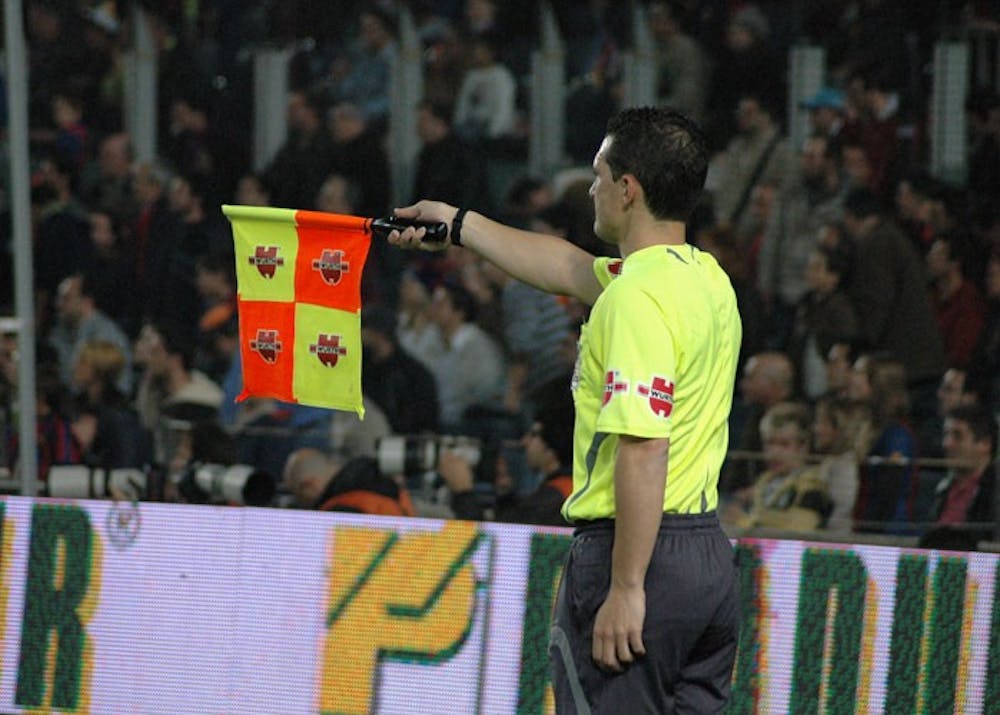
In recent months, discussions about video technology have come to the forefront in the soccer community. In 2016, we saw the first soccer competition use video assistant referee (VAR). VAR is made up of a team of three people, including at least one current or retired referee, that watches replays of important plays and decisions.
For VAR to be called into action, either the ref on the field has to request for it, or the VAR team recommends its use. The only situations that can be viewed by VAR are goals, mistaken identity (the ref giving a yellow or red card to the wrong player), red cards and penalties. In the end, the head ref always has the choice of whether to stick to his or her original call or go with VAR’s suggestion.
So far, VAR has been tested and fully implemented in several leagues and competitions in Italy, the United States, Germany and England. Major international tournaments such as the FIFA Confederations Cup and the FIFA U-20 World Cup used VAR last year.
In almost two years of VAR being used, this new system has seen some positives and negatives. There is no doubt that several bad decisions have been averted because of this system (although many argue that the ref should have made the correct call from the start). However, VAR has and will continue to pose more problems that outweigh any potential benefits.
First and foremost, VAR delays the speed of game. One of the many reasons soccer fans love the sport is the speed of the game, but VAR has seen delays upwards of four minutes on multiple occasions, with wrong calls still being made.
On top of this, several players have already complained that VAR gets called into action too often. The original intentions were for VAR to be used only when there is a clear error on the part of the main ref.
Another problem with VAR is posed by the multiple angles and speeds that it can show a replay in. Sometimes, a ref is already in perfect position to make a decision. However, if a ref sees a slower replay or a different angle of what happened, a tackle or legal fight for possession of the ball might look harsher than it really was. When VAR is used in this way, it only results in another delay of game and wrong decision making.
Despite being in use for less than two years, VAR already has made many errors. In perhaps the craziest case so far, a team in a lesser known league won the ball in their own half, progressed forward, scored and had their goal cancelled in favor of a penalty being awarded against them.
Whether or not the penalty should have been awarded in the first place, the ref should not have been allowed to use VAR after the play had ended.
Just last summer, Germany played Chile in the Confederations Cup Final. During the match, Chilean player Gonzalo Jara brutally elbowed Timo Werner of Germany as he was trying to win the ball. After reviewing the incident via VAR, the ref only gave Jara a yellow card, despite the blatant and aggressive foul.
Last year in a match between Real Madrid and Al Jazira, Carlos Henrique Casemiro of Real Madrid scored a legal goal. Initially, the ref allowed the goal to stand, but after reviewing the goal with VAR, he called it offside. Real Madrid player Karim Benzema was in an offside position when Casemiro’s shot was taken.
Because Benzema did not interfere with play, the goal should have stood, but using VAR disallowed a very standard goal.
Just a few weeks ago, Manchester United faced off against Huddersfield Town in an FA cup game. In the first half, Juan Mata scored the second goal for United, but because Mata appeared to be slightly offside, VAR was used (even though it can only be used for “clear errors”).
After review, the ref called the play offside. During the broadcast for the game, viewers were able to see what the VAR refs saw. The replay was stopped just as the pass to Mata was made, and the VAR refs drew lines on the screen to make the decision easier.
However, the lines on their screen were not parallel with the opposition box, meaning that the refs were making the decision from the wrong angle. If the opposition box was used as reference, Mata would appear to be onside.
Almost two years after its first use, VAR has disappointed. From delays in play and continued wrong decisions, it seems that the only solution to VAR’s problems is to completely stop its usage. Unfortunately, this is not going to happen anytime soon, as VAR has already been confirmed for the 2018 World Cup. Despite its many downsides, VAR is here to stay.





